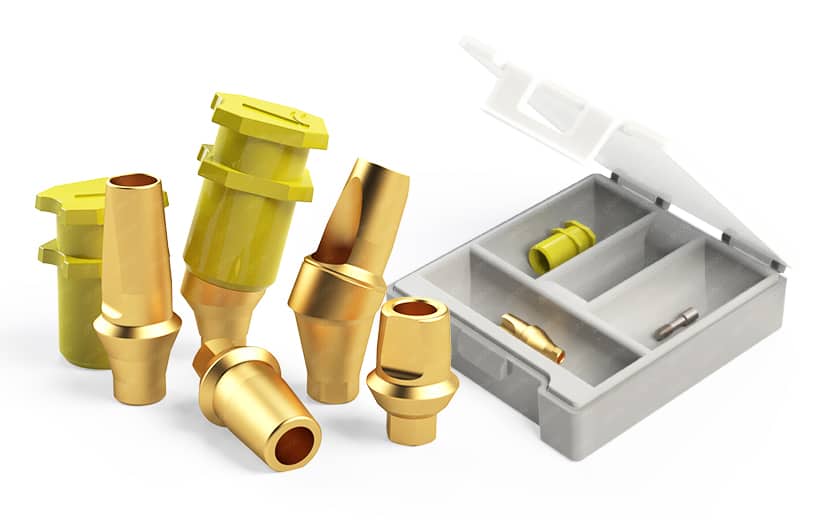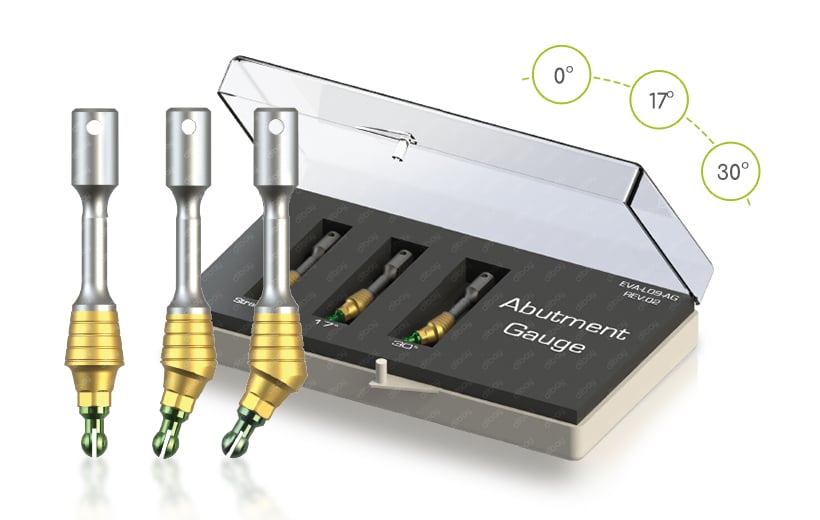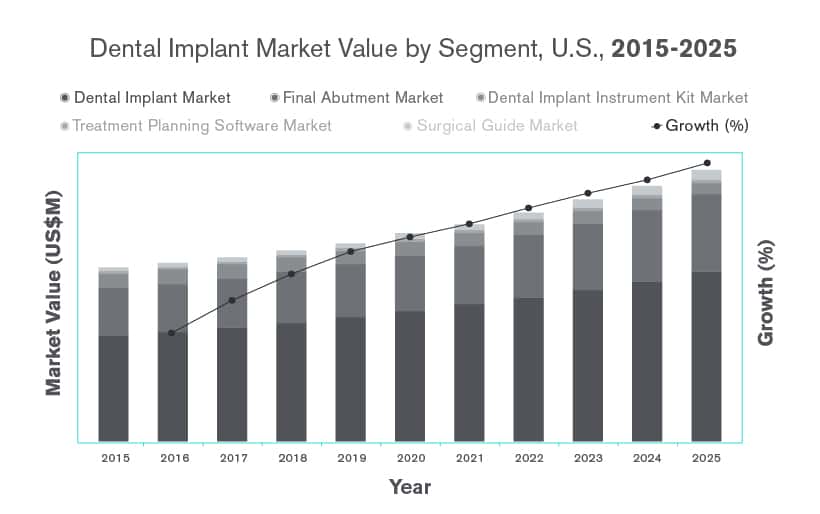
Clicq-Pression™ Transfer Abutments (A EM™ Innovation) vs. Traditional Impression Copings
No doubt, dental implants have become the most preferred tooth replacement option among dentists and patients, owing to their excellent durability and naturally pleasant aesthetic. However, when we talk about dental implants, one of the most important factors which determines their long-term success and clinical efficacy is the ability of the dentist to accurately record the spatial position of the implant in relation to the existing natural teeth. This ensures that not only the prosthesis supported by the implant remains stable, but also provides an excellent passive fit of the restoration.
Conventionally Used Implant Impression Techniques
Conventionally, dentists use dental implant impression copings to replicate the position of the implant in the oral cavity. The coping is screwed onto the implant and is then used for recording the position of the implant on the study cast. For this purpose, dentists mainly use one of two impression techniques: the open or the closed impression.
- Open Impression Technique – With an open impression, a custom-made impression tray is used, and holes are made in the region where the impression of the implant is to be made. Once the impression is made, the tray is removed, and the impression coping remains attached to the impression. The implant analog is screwed over the coping before sending the impression to the laboratory.
- Closed Impression Technique – In this technique, a custom tray of sufficient vertical height is used to make the impression. The healing abutment on the implant is replaced with a closed tray transfer coping. Once the impression is set, the tray containing the impression cap is removed from the mouth and the compression coping and replica can be placed into the impression. The healing abutment is replace back in the implant.

Problems with Conventional Implant Impression Copings
While both types of impression techniques and copings can be used for making implant impressions, these copings have some inherent problems associated with them which can sometimes lead to complications and errors. Problems such as:
- Time consuming procedure. Regardless of the accuracy, transferring impressions using conventional copings is time-consuming and requires practice and skill.
- Risk of error. If a coping does not get accurately transferred to the impression, or if its position changes during the transfer, it can lead to poor results in terms of the stability, retention, and durability of the implant-supported prosthesis.
- Magnification of implant convergence. When using conventional implant copings, convergence of the implants can be magnified, which can lead to erroneous results.
- Issues with tilted implants. in cases where implants must be placed at an angle, problems can arise regarding the fit of the copings over these tilted implants.
How to Overcome the Drawbacks of Conventional Copings?
As a clinician, you can avoid these issues by selecting the appropriate type of coping for each clinical scenario. In addition, radiographic visualization can also help in ensuring the optimal usage of the copings for impression-transfer. Regardless, it’s impossible to avoid all the above-mentioned drawbacks of conventional copings.
dibay now offers you the perfect solution for dental implant impressions: our premium Clicq-Pression™ Transfer Abutments (patent pending) angled abutment impression copings. These titanium nitrite-coated copings will introduce you to a new era of convenience, cost-effectiveness and accurate impression transfers for the dentists.
Here’s the nitty-gritty on why our new, groundbreaking technology is going to be your next favorite dibay buy:
- Take full mouth impressions. Even when implants are not aligned, Clicq-Pression™ copings allow you to take a single, full impression. That means you can toss the All-on-4 and All-on-6 complex, multi-unit procedures out the window and save a significant amount of time. Whether you need to make an impression for a single implant or for a full mouth implant-supported prosthesis, Clicq-Pression™ has you covered for a variety of clinical scenarios.
- Save money on denture systems. With the ability to take full mouth impressions, time and material requirements decrease, and so does the final bill.
- Choice of collar height, cone length and angulation. Being able to select for these variables depending on your patient’s needs means there is no need for any modifications or cutting of the copings.
- Use the Clicq-Pression™ as a final abutment. Or again. We did not just make an impression coping – you can also use the coping as a final abutment. It’s even reusable for subsequent impressions. Pretty cool, right?
- Compatibility – Like all dibay products, the Clicq-Pression™ is compatible with major implant systems available worldwide.
Making impressions for implant-supported prostheses has never be easier! Our innovative new Clicq-Pression™ Transfer Abutments copings allow you to make hassle-free and accurate impressions while saving time and money. Interested? Visit our website today for more information.











